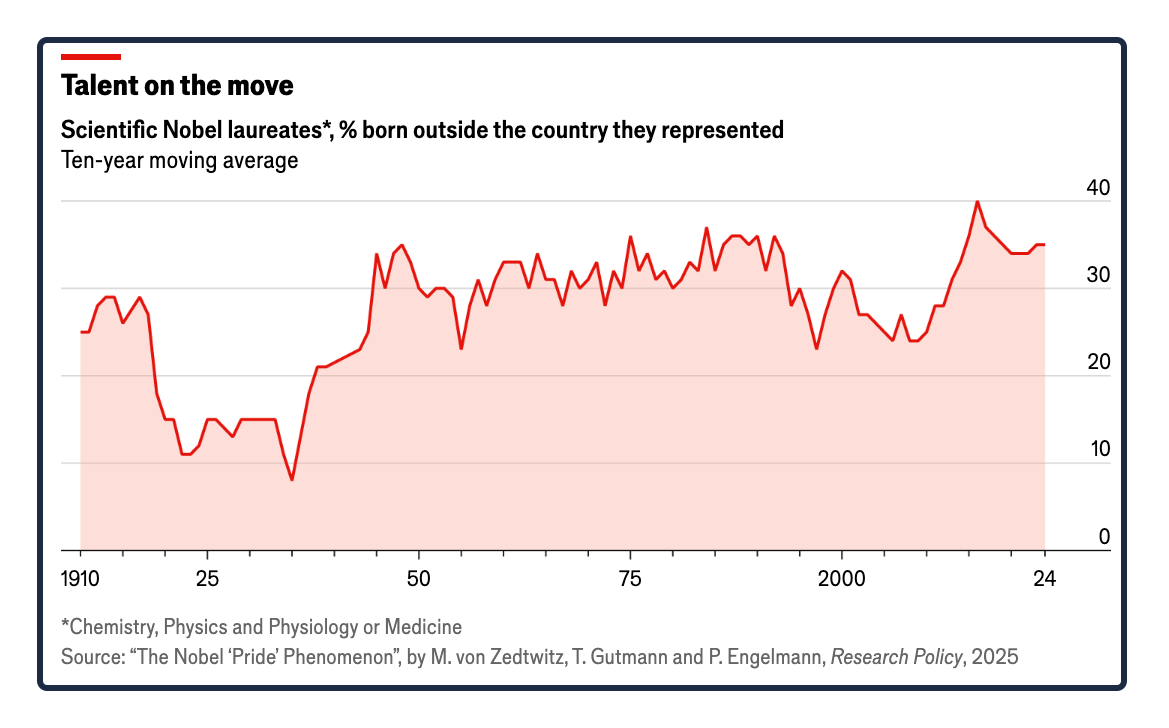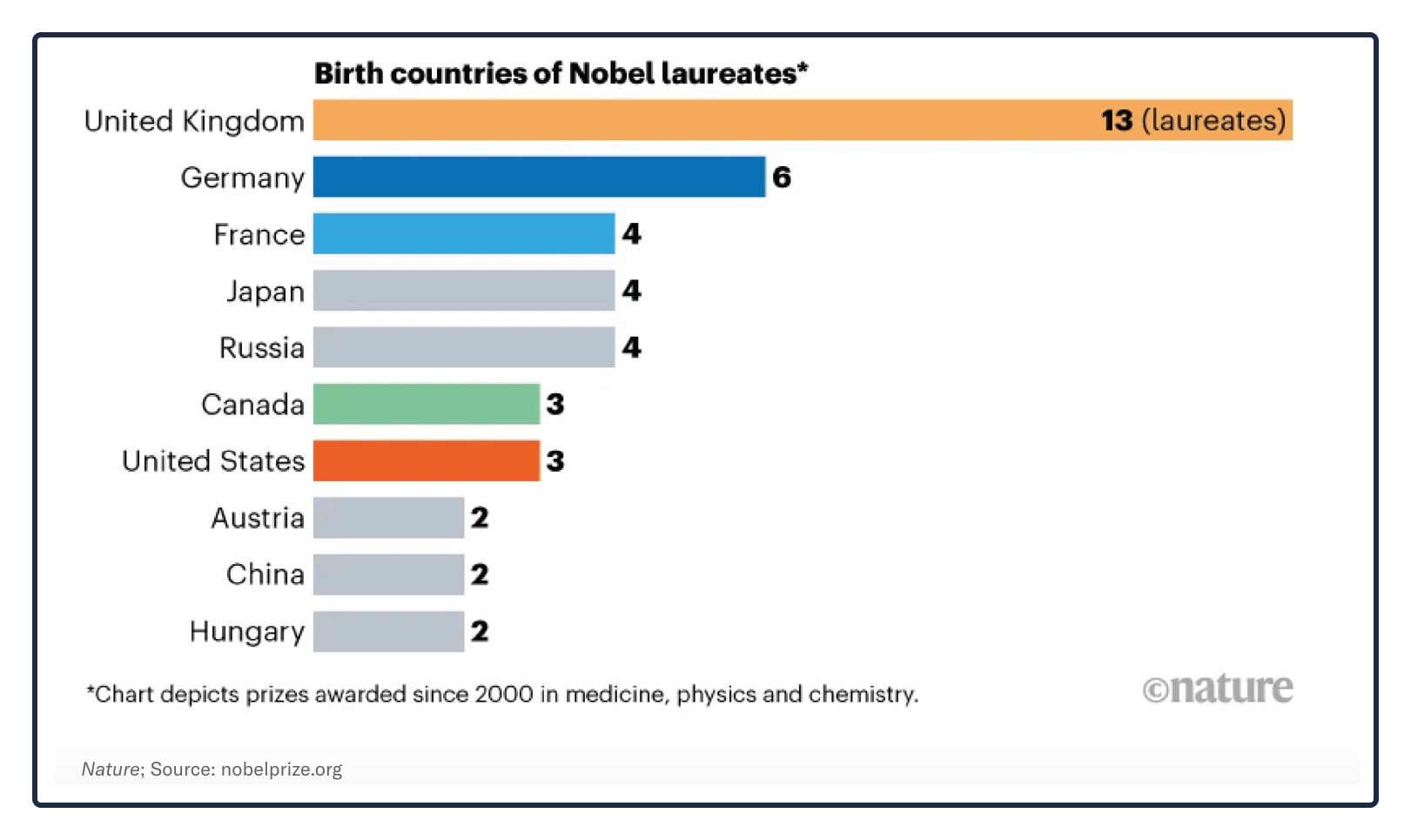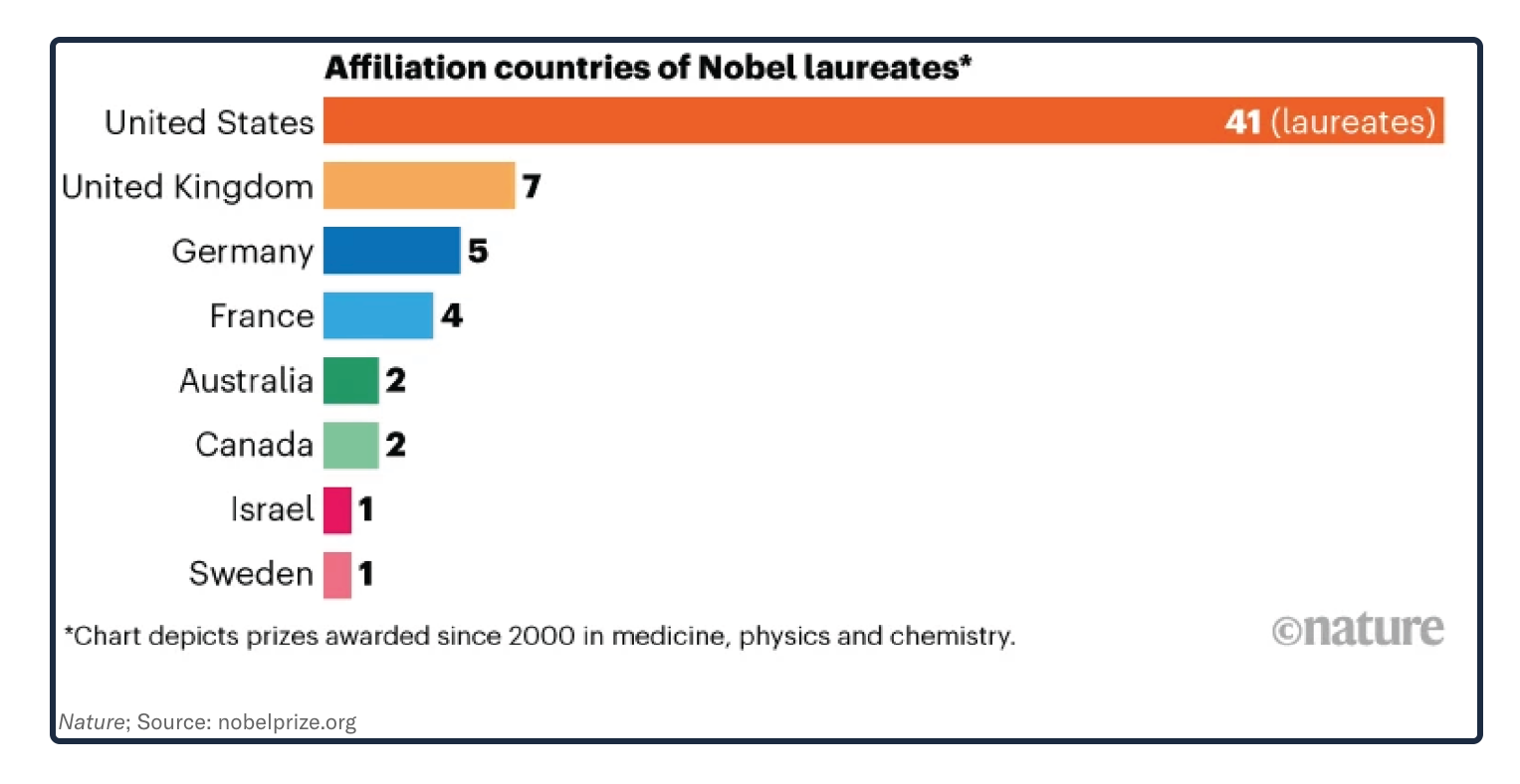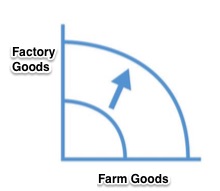
How a Tariff Can Kill a Cow
November 10, 2025Among the scientific Nobel laureates, if you are a physicist, you could also be a migrant. Scientific American suggests that the reason is your need for the most costly equipment:

As a mobile cohort, Nobel laureates display the value that countries get from the immigrants they welcome. The main beneficiary has been the United States.
Mobile Talent
Born elsewhere, six of the nine researchers that won Nobel Prizes this year did their work at U.S. institutions. With Poland the biggest talent loser, the U.S. has been the winner. Out of the 304 scientific Nobels awarded to U.S. residents from 1901 to 2024, 30 percent went to immigrants.
The U.S. reflects the prevalence of mobile talent. Typical of Nobel history, this year’s winners made their discoveries away from their home country:

Meanwhile, Scientific American shared the following two graphics on the origin and destination countries of Nobel Laureates.
Where were they born?

Where did they go?

Using Gallup World Poll responses from 150,000 people in more than 150 countries, the Economist identified which countries were most attractive to potential migrants. They calculated, that whether it’s a fast internet or relaxed immigration rules, comparing 2010-12 and 2021-23, Portugal-bound college graduates tripled.
This is their overview:

Our Bottom Line: Economic Growth
Using Selman Waksman as an example, retired Harvard professor David S. Landes, humanized all of our statistics. Waksman’s story starts in 1910, when, as a 22 year old Russian immigrant, he arrives in Philadelphia. The tale reaches its climax when he receives the 1952 Nobel Prize in Chemistry and Medicine for developing streptomycin. Waksman’s talents flourished in the United States because of the education he accessed, the mentors who supported him, and the businesses and federal government who gave him research money.
Summarized by Landes, Waksman was successful because of 1) “Contact and exchange” which resulted from “multiple points of intellectual entry” where ideas are nurtured, developed, and shared 2) Individual ambition, drive, and intelligence 3) Luck 4) An ongoing stream of new tools and technology. The result is technological progress, a key ingredient of economic growth.
Shown by a production possibilities graph, we just need to show the rightward shift of our curve. Indeed, new technology brings new potential to our productive capability. Indeed, as it spread, the social benefit of streptomycin, touched everyone on the farm, in the factory, and beyond:

My sources and more: Always a handy place for interesting facts, the Economist’s Graphic Detail, here and here had the images that told our story. From there, Scientific American had more of the details. And finally, do take a look at our past post on immigrant entrepreneurs and of course, this David Landes classic..
Please note that several of today’s sentences were in a past econlife post.
![econlifelogotrademarkedwebsitelogo[1]](/wp-content/uploads/2024/05/econlifelogotrademarkedwebsitelogo1.png#100878)

